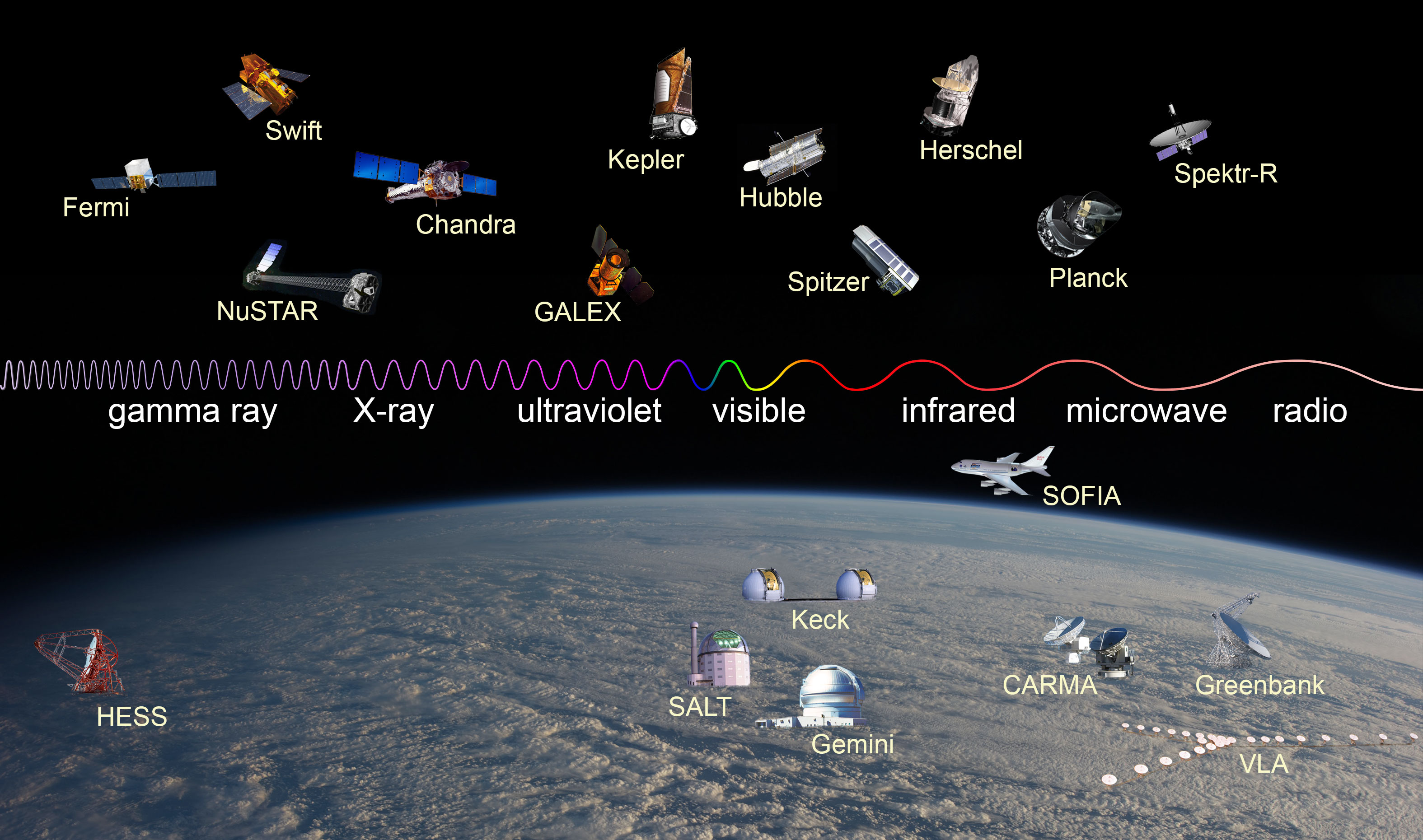Space telescopes have revolutionized our understanding of the universe by providing astronomers with unparalleled views of celestial objects from outside Earth's atmosphere. Unlike ground-based telescopes, space telescopes are not affected by atmospheric distortions, which can blur or block the light reaching Earth. They operate in various wavelengths of light, including visible, ultraviolet, and X-ray, allowing scientists to study different aspects of the cosmos.

Hubble Space Telescope (HST): Launched in 1990, the Hubble Space Telescope is one of the most famous and impactful space telescopes. It has captured stunning images of distant galaxies, nebulae, and stars, providing detailed observations that have transformed our understanding of the universe. The HST has contributed to various fields, including cosmology, galaxy formation and evolution, stellar populations, and planetary science.
Chandra X-ray Observatory: Launched in 1999, the Chandra X-ray Observatory is designed to observe high-energy X-ray emissions from celestial objects. It has provided valuable insights into phenomena such as black holes, supernovae remnants, active galactic nuclei, and X-ray binaries. Chandra has greatly advanced our understanding of the extreme universe, where temperatures and energies are beyond the capabilities of other telescopes.
Spitzer Space Telescope: The Spitzer Space Telescope, launched in 2003, observed the universe in the infrared portion of the electromagnetic spectrum. It has made significant contributions to our understanding of star formation, planetary systems, and the formation of galaxies. Spitzer's observations have helped identify and study exoplanets and their atmospheres, shedding light on the diversity and nature of planetary systems beyond our own.
Kepler Space Telescope: Kepler, launched in 2009, was dedicated to the search for exoplanets—planets outside our solar system. It used the transit method, observing the slight dimming of a star as a planet passes in front of it. Kepler discovered thousands of exoplanet candidates, including Earth-sized planets within the habitable zone of their host stars. It revolutionized our understanding of exoplanet demographics and the prevalence of potentially habitable worlds in the galaxy.
James Webb Space Telescope (JWST): Scheduled for launch in late 2021, the JWST is one of the most anticipated space telescopes. It will operate primarily in the infrared range, allowing it to observe the early universe, study the formation of galaxies, detect the atmospheres of exoplanets, and investigate the origins of stars and planetary systems. The JWST's advanced technologies and capabilities are expected to transform our understanding of the cosmos.
Here are some of the most important space telescopes that have been used in astronomy:
- Hubble Space Telescope: Launched in 1990, Hubble is the most famous space telescope. It has made many important discoveries, including the expansion of the universe and the existence of exoplanets.
- Chandra X-ray Observatory: Launched in 1999, Chandra is the world's premier X-ray telescope. It has been used to study black holes, supernovae, and other objects that emit X-rays.
- Spitzer Space Telescope: Launched in 2003, Spitzer was the first infrared telescope in space. It was used to study the birth and evolution of stars and galaxies.
- James Webb Space Telescope: Launched in 2021, the James Webb Space Telescope is the most powerful space telescope ever built. It is expected to make many new discoveries about the universe, including the first images of exoplanets.
Space telescopes are an essential tool for astronomers, and they have revolutionized our understanding of the universe. They allow us to study objects that are too faint or too distant to be seen with ground-based telescopes, and they allow us to study objects that are obscured by the Earth's atmosphere. Space telescopes have made many important discoveries, and they are sure to continue to make new discoveries in the years to come.
These space telescopes, along with others like the Fermi Gamma-ray Space Telescope, the Planck satellite, and upcoming missions such as the Nancy Grace Roman Space Telescope, contribute to a vast range of astronomical discoveries. They enhance our knowledge of the universe, unravel cosmic mysteries, and inspire new questions for scientists to explore. Space telescopes continue to play a vital role in advancing our understanding of the cosmos and shaping the field of astronomy.
Comments
Post a Comment